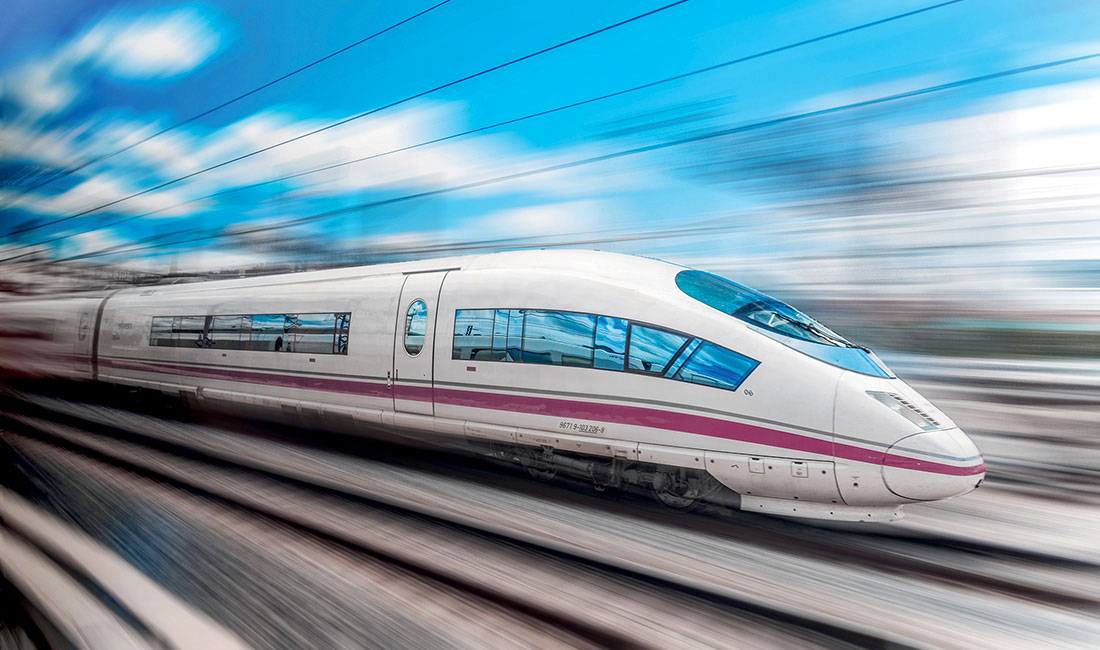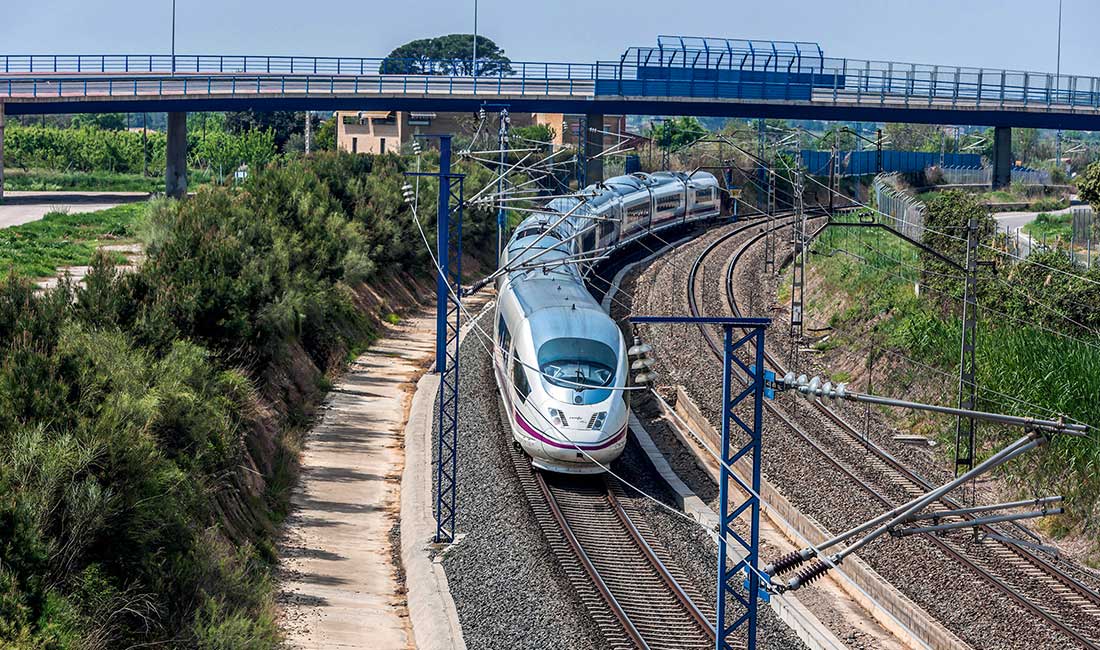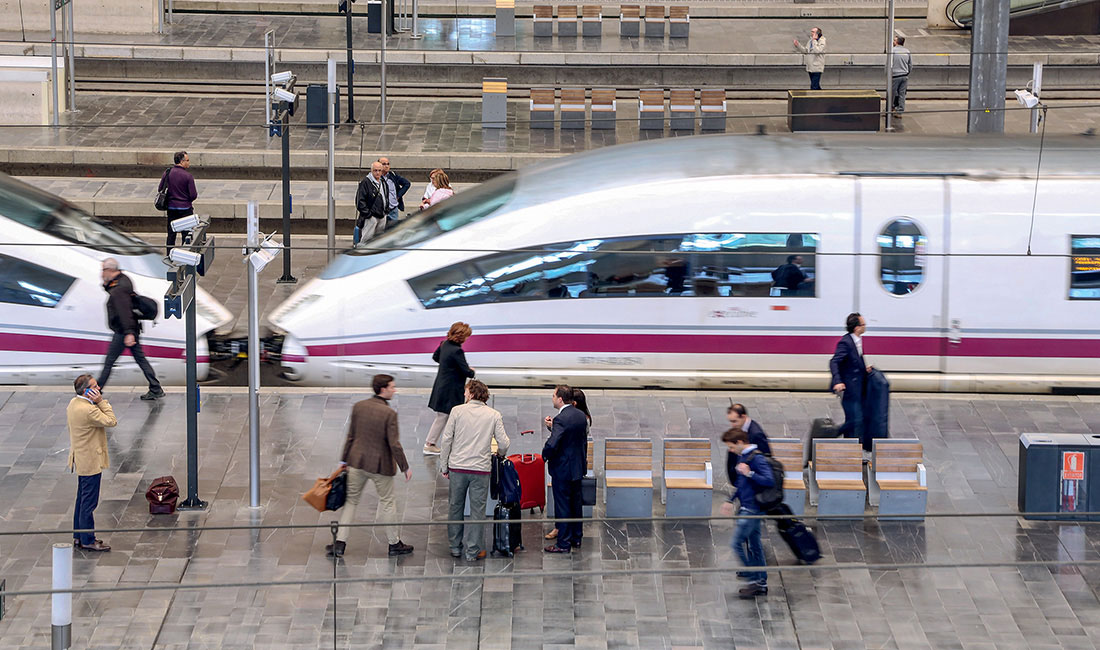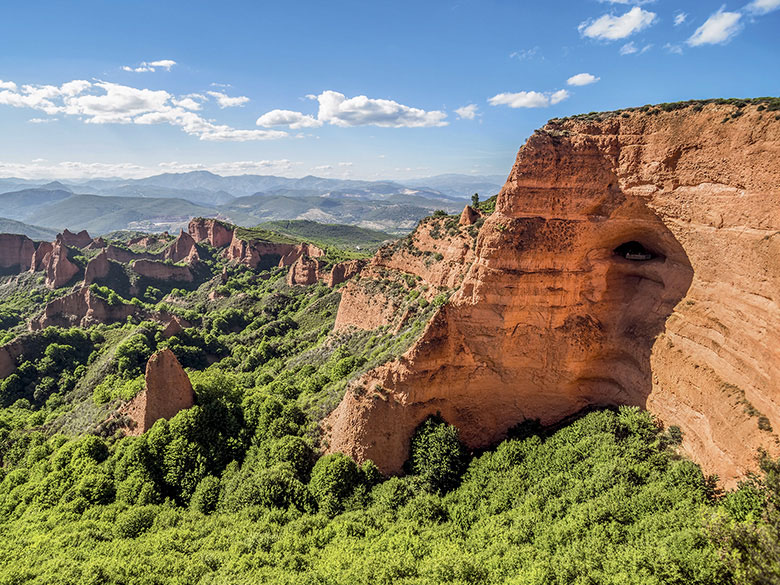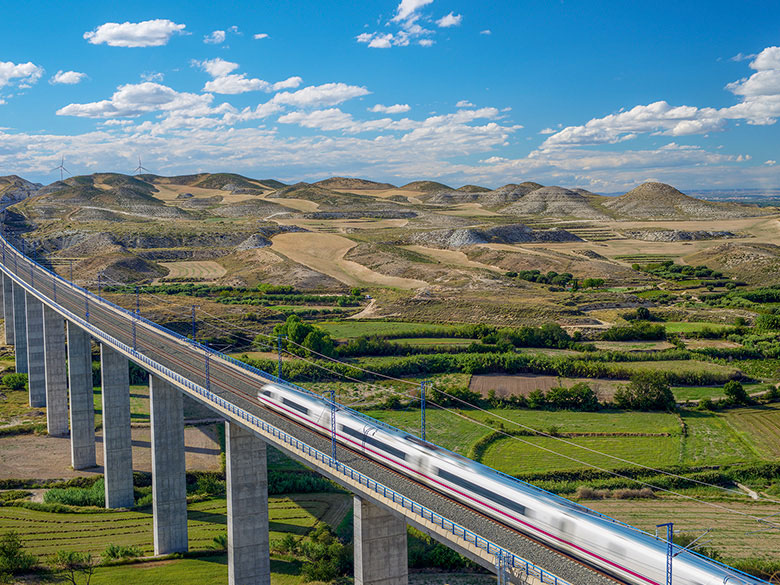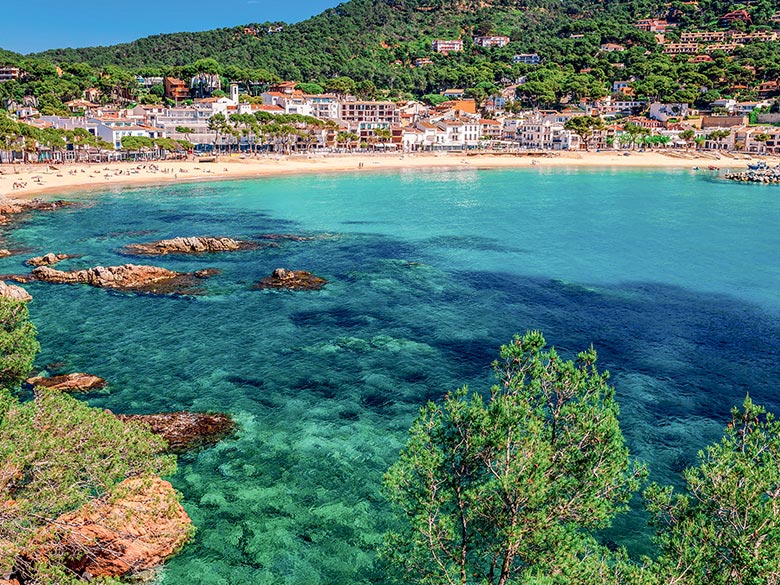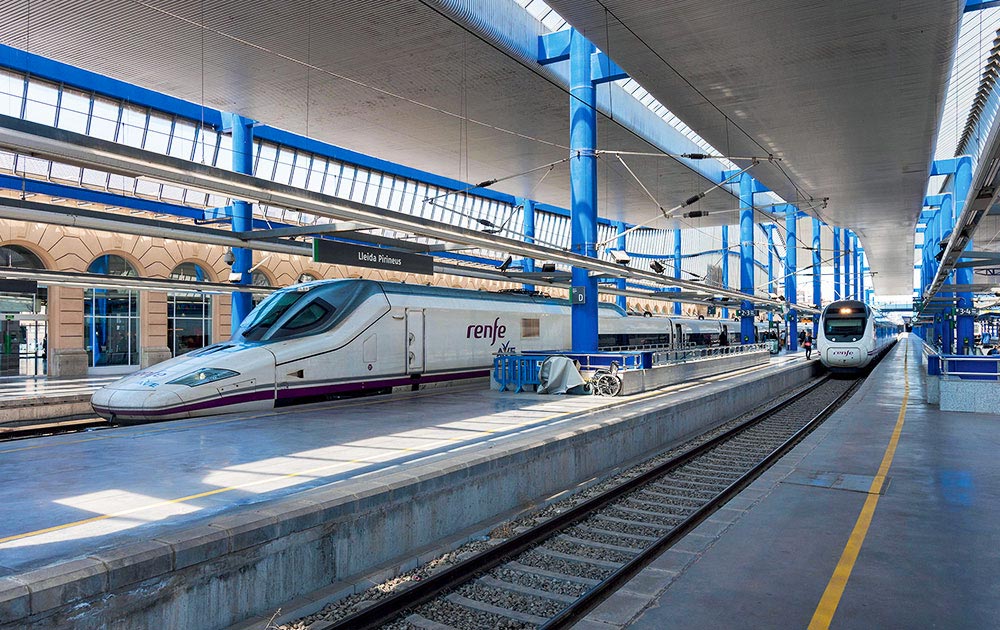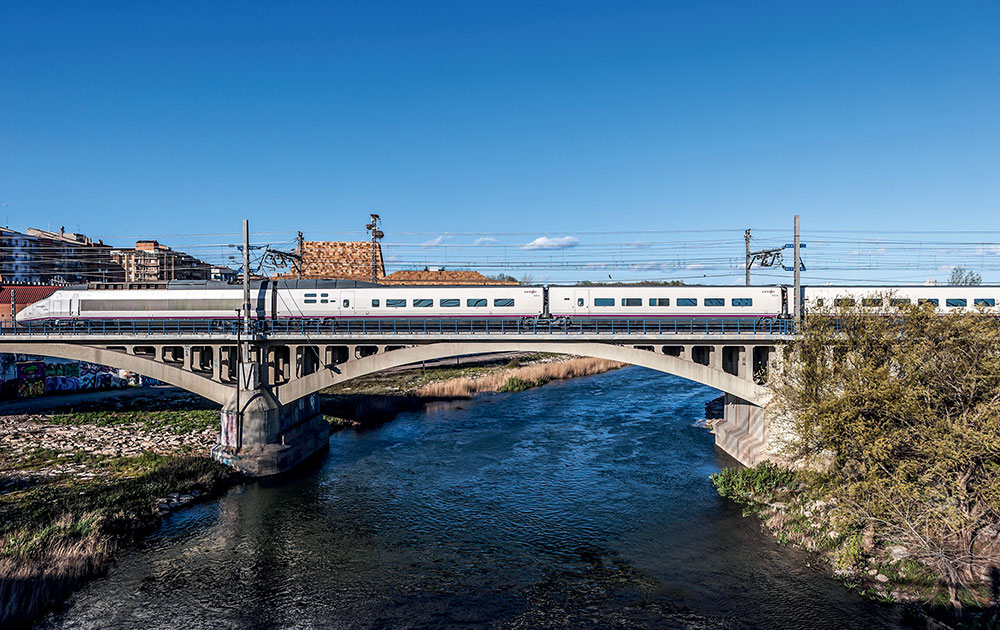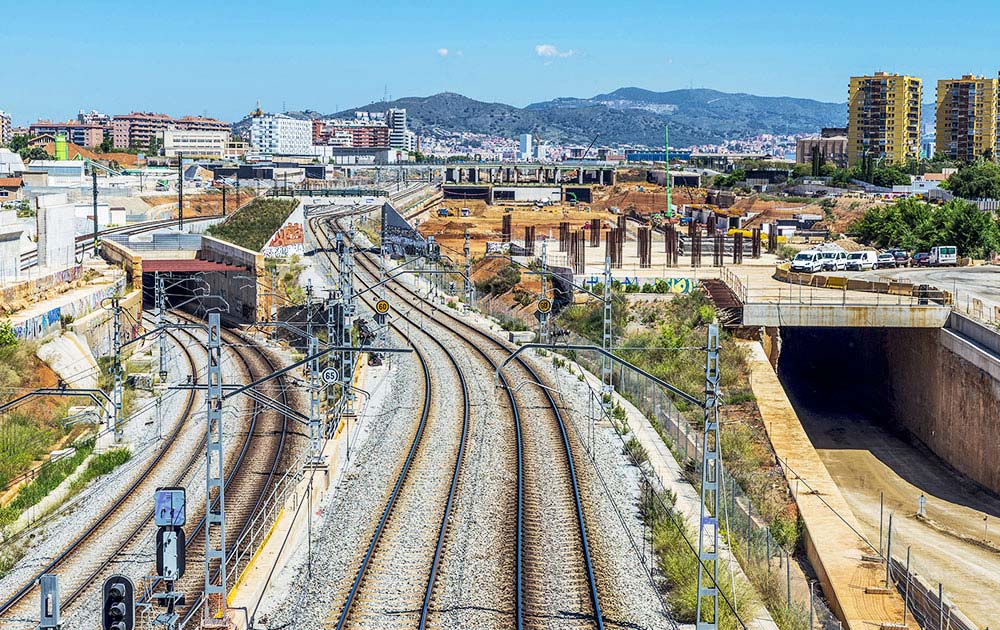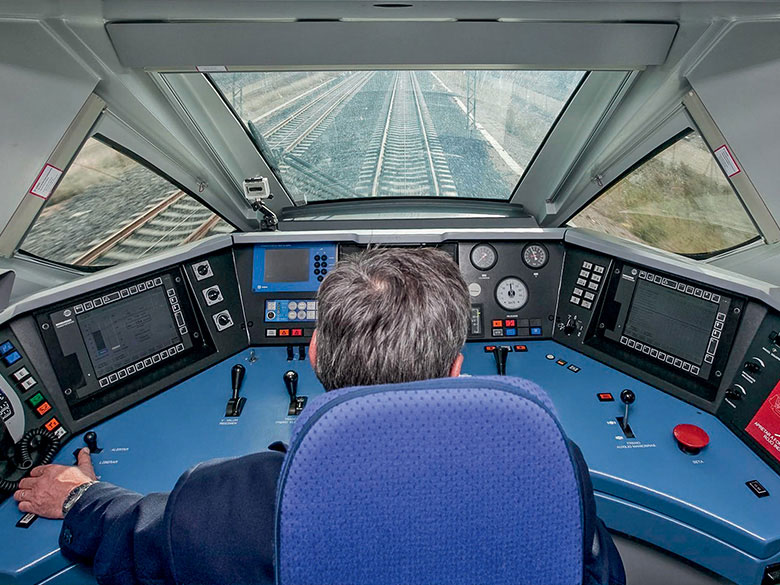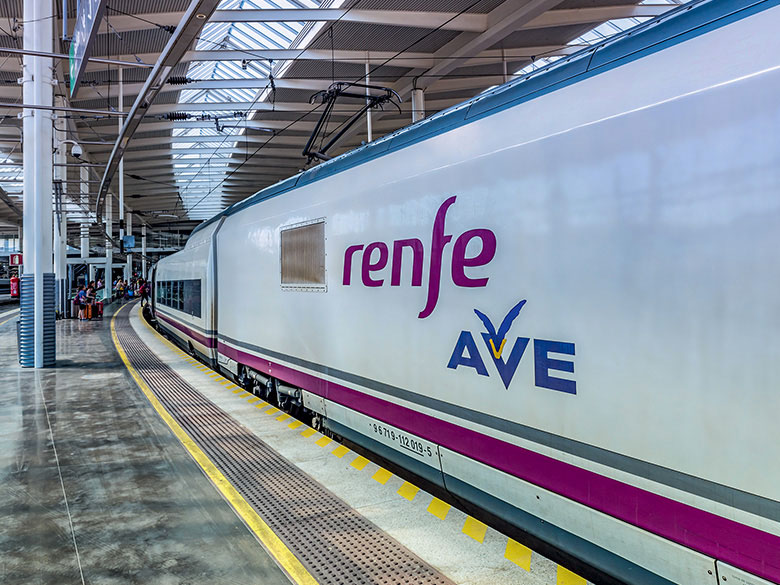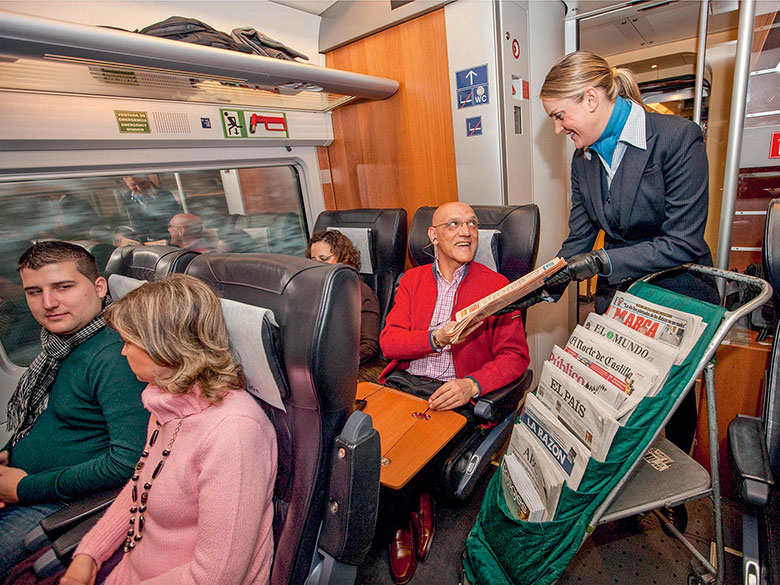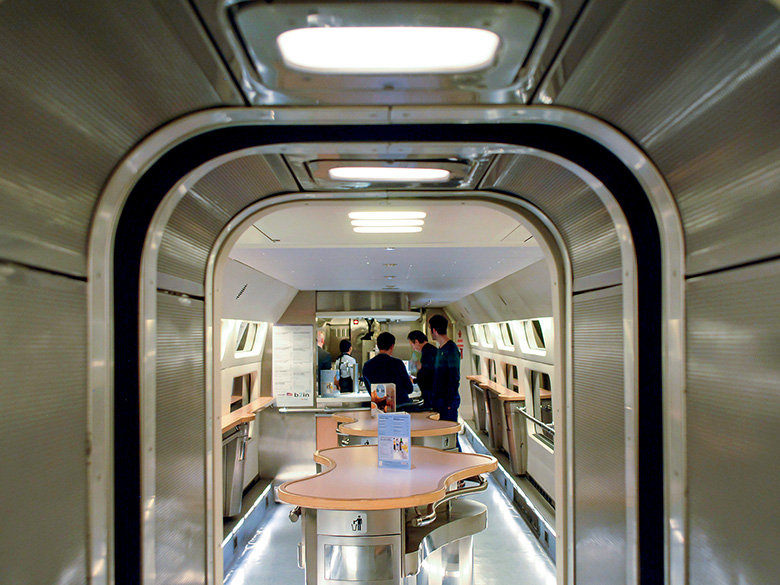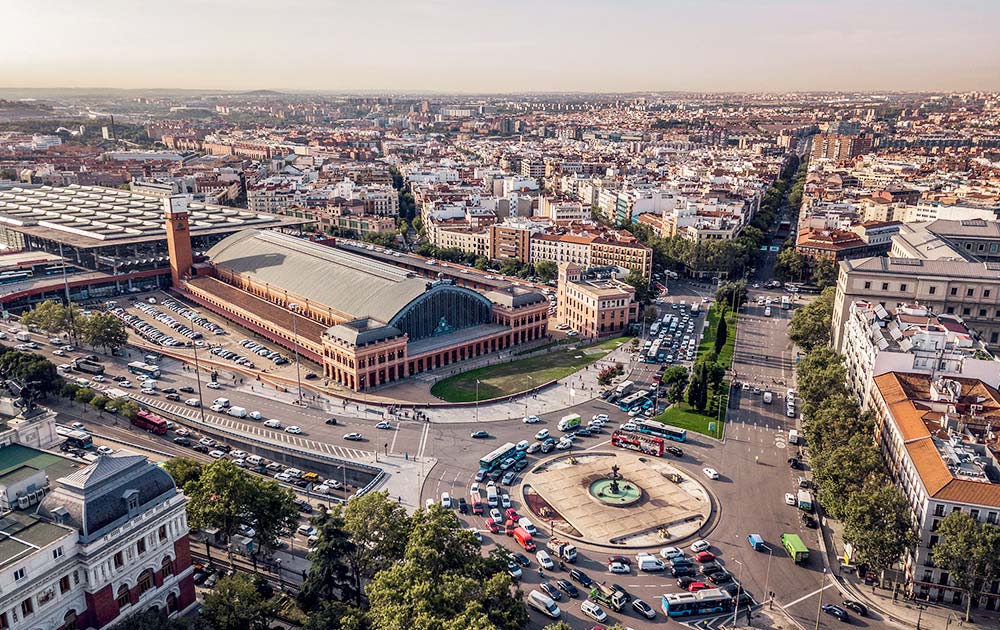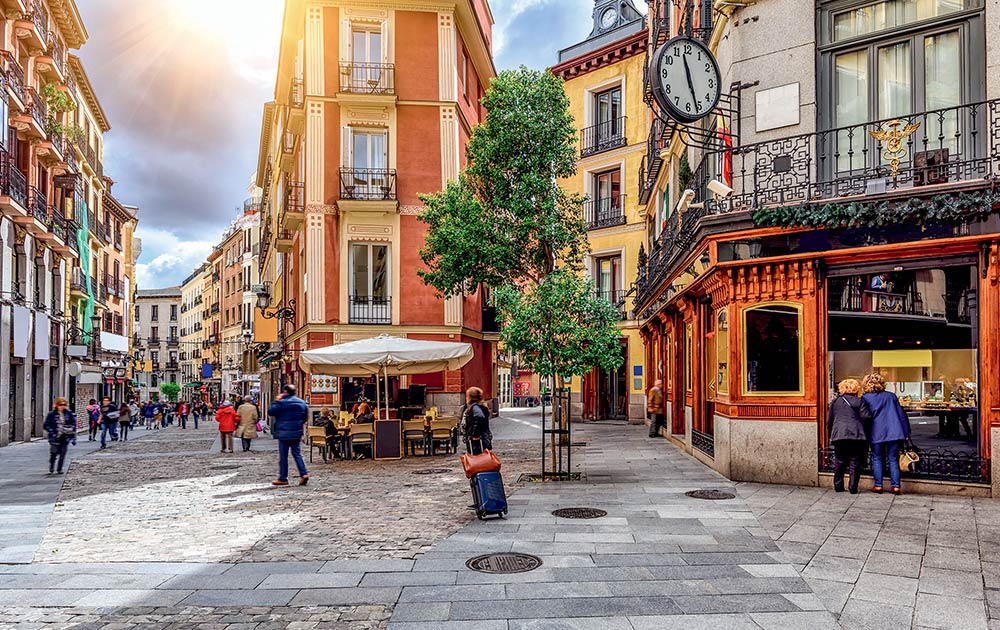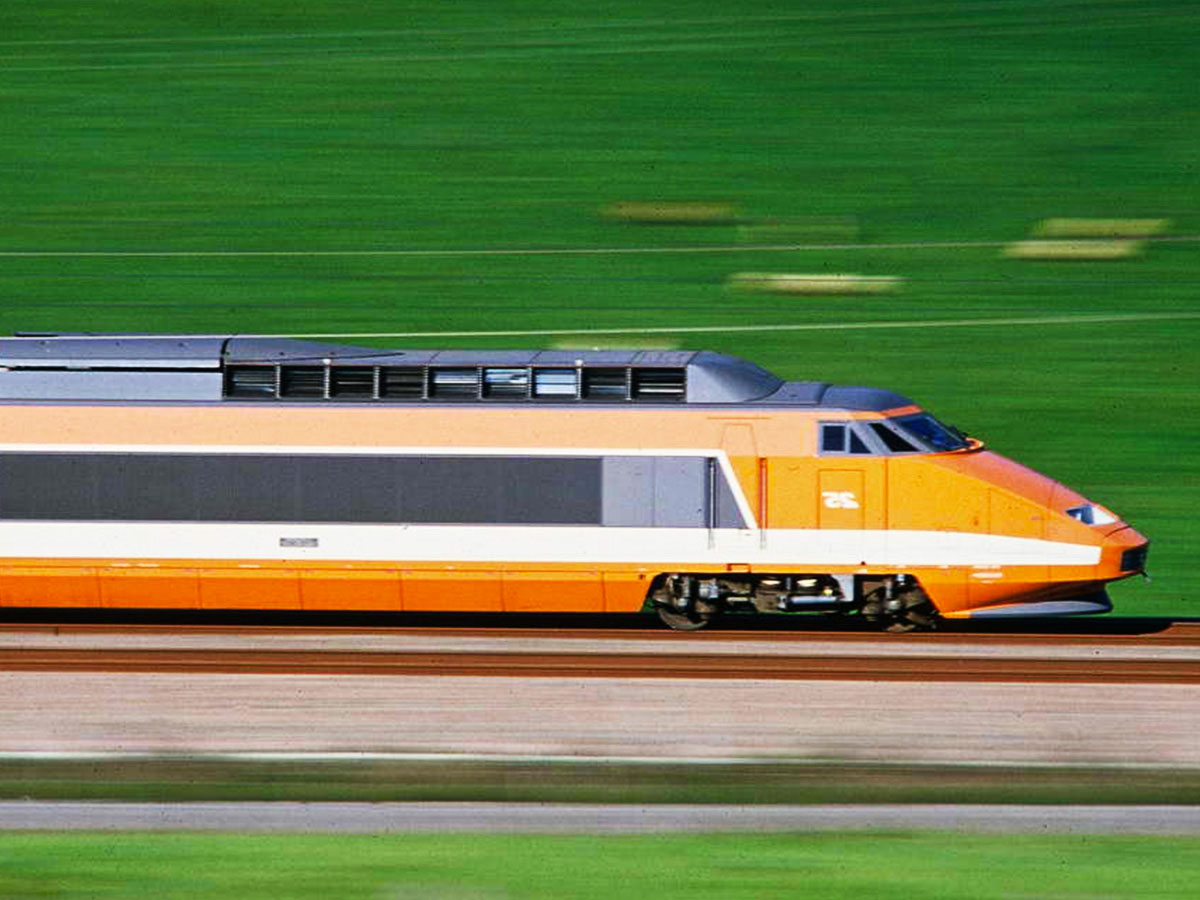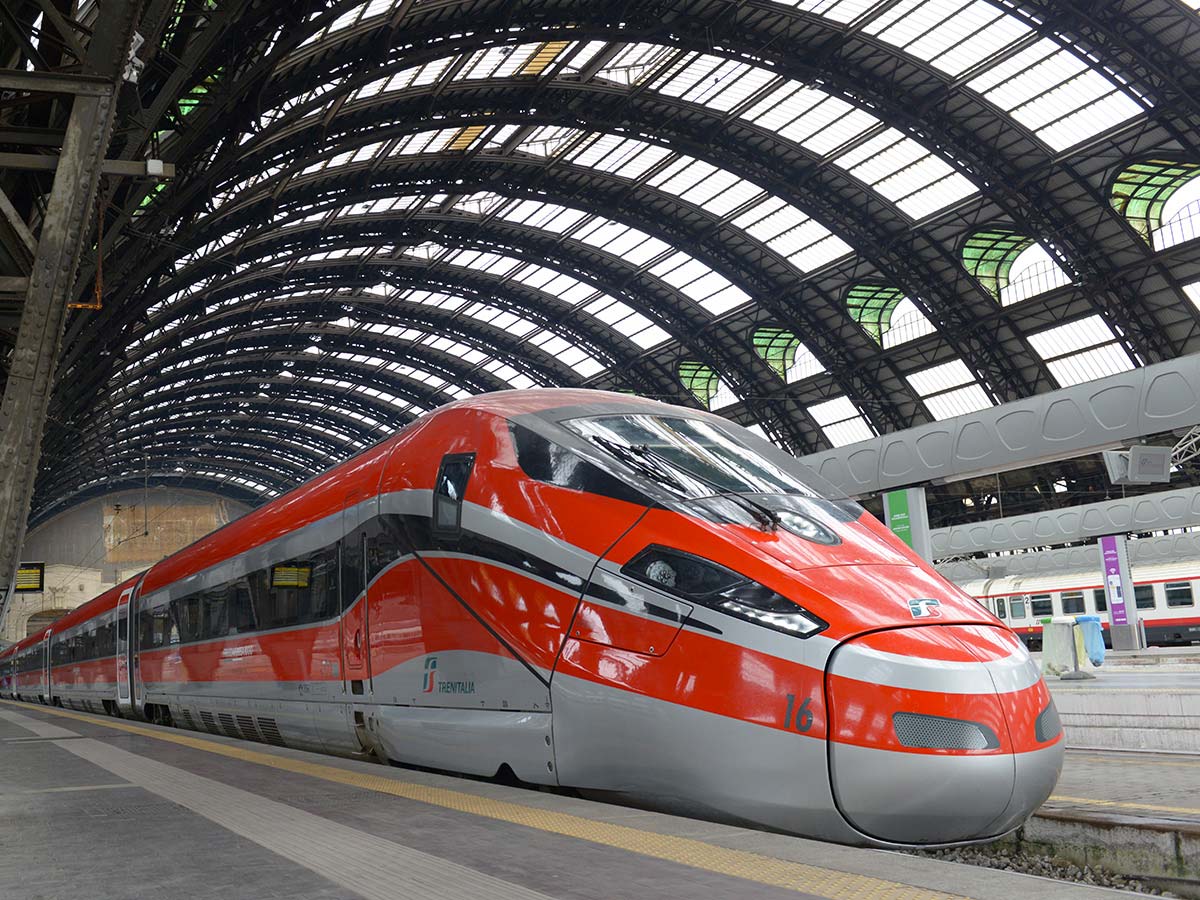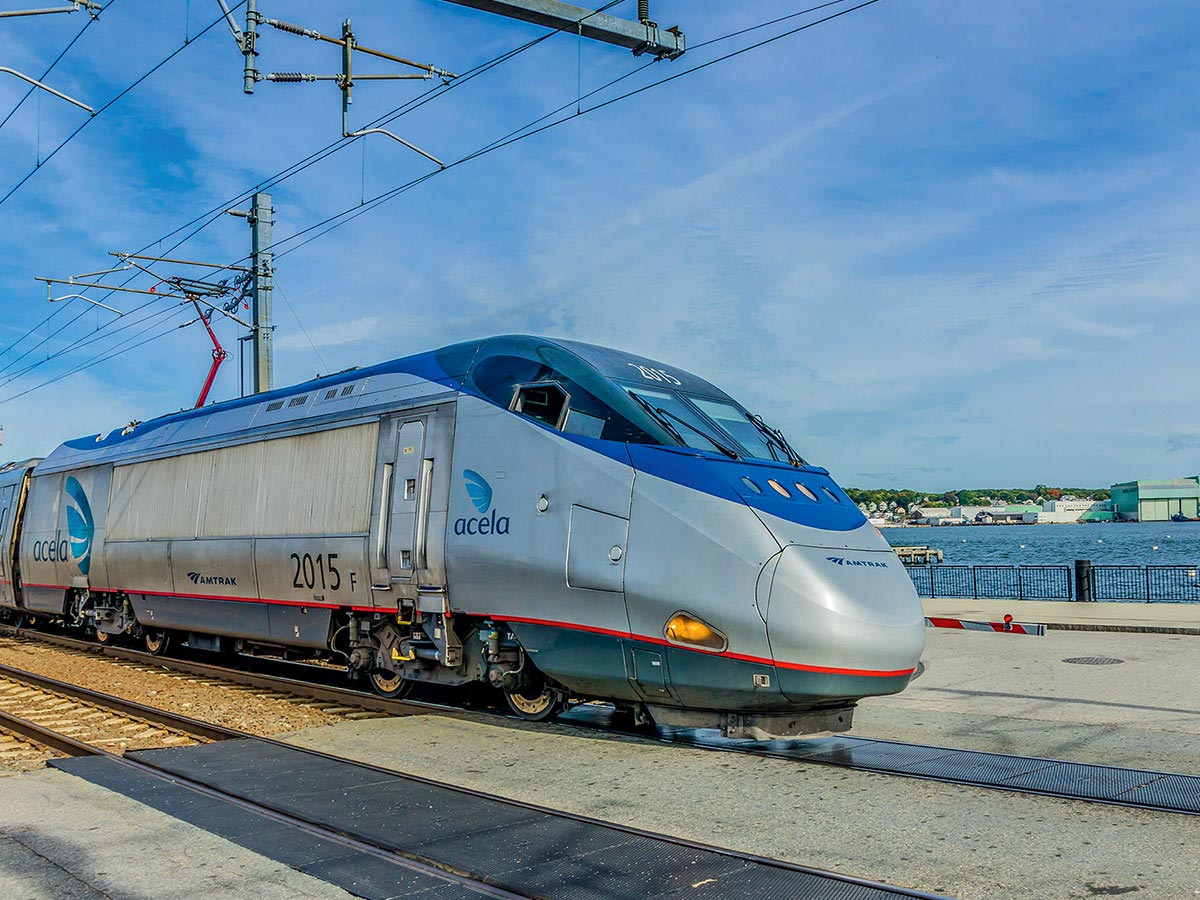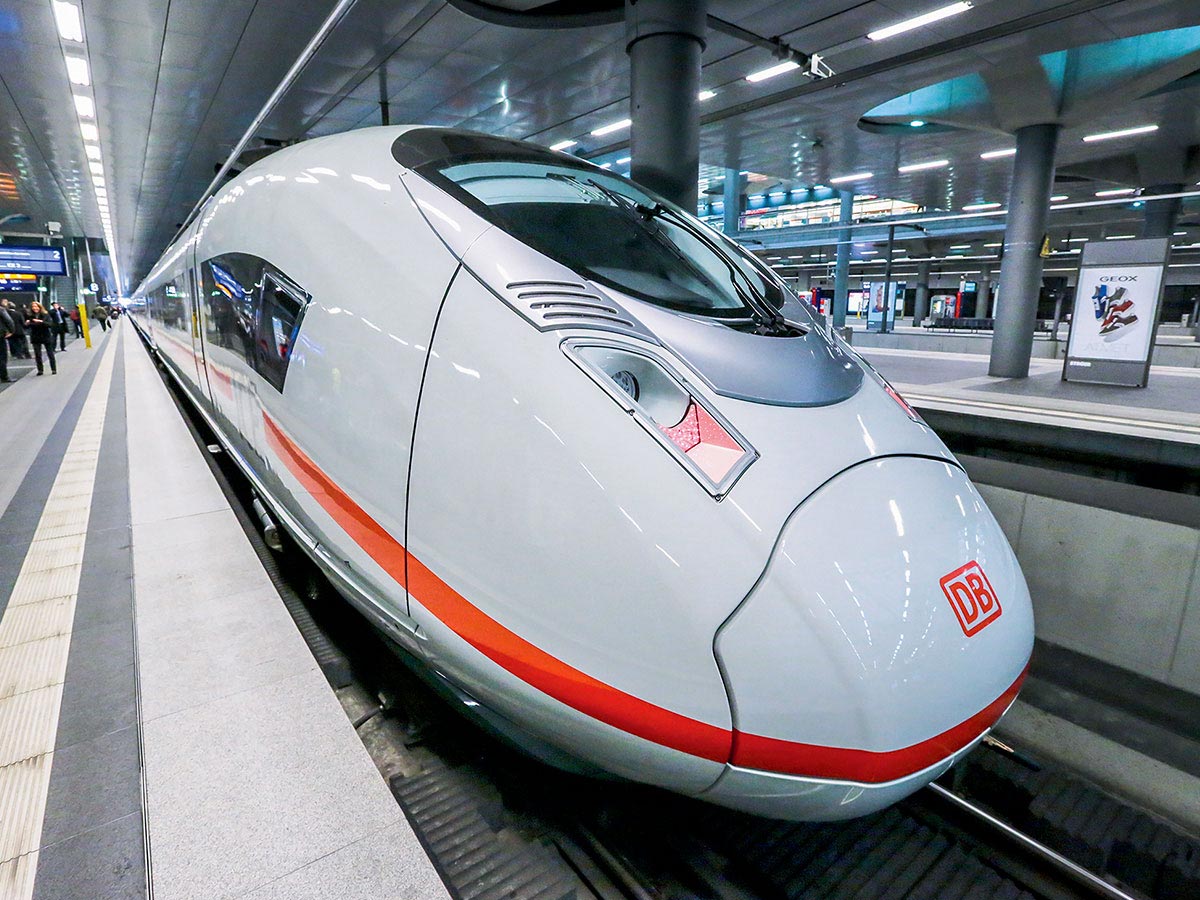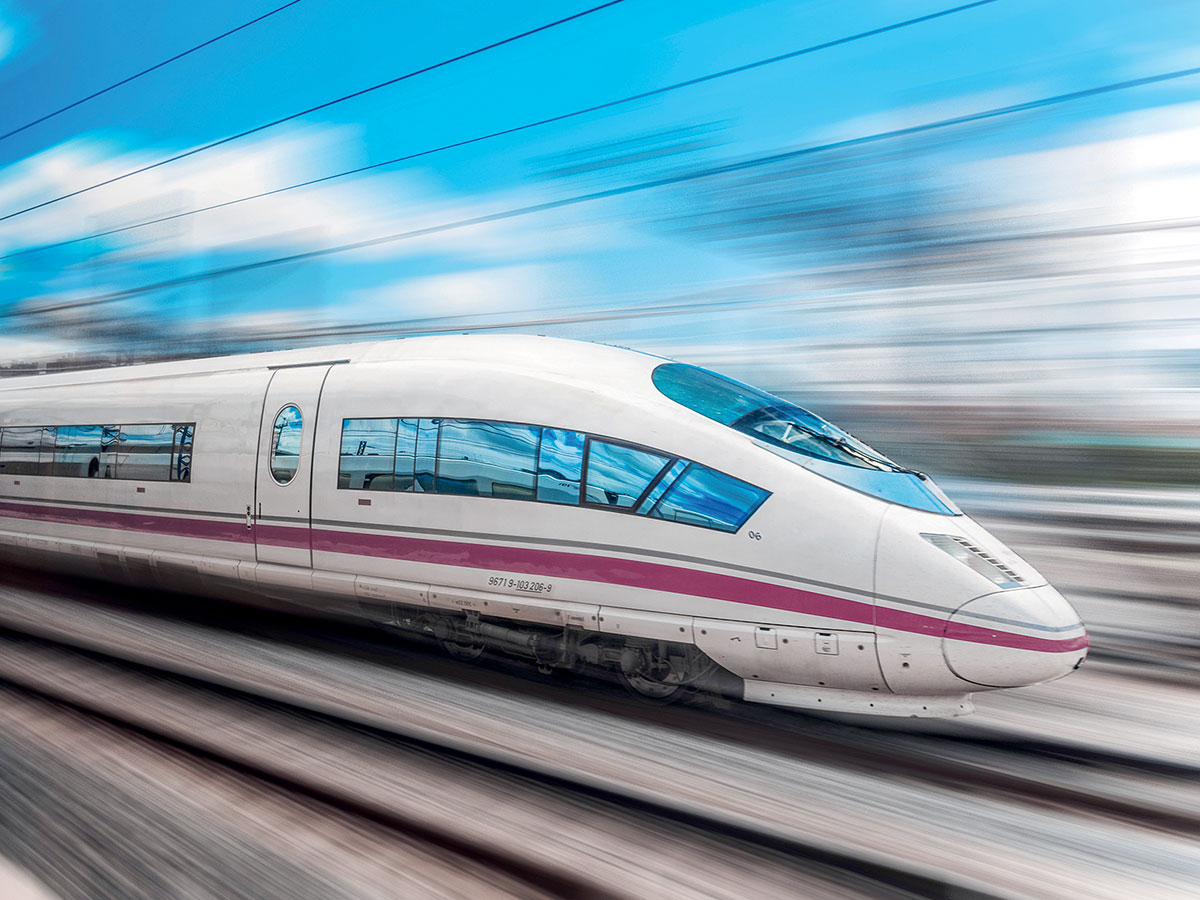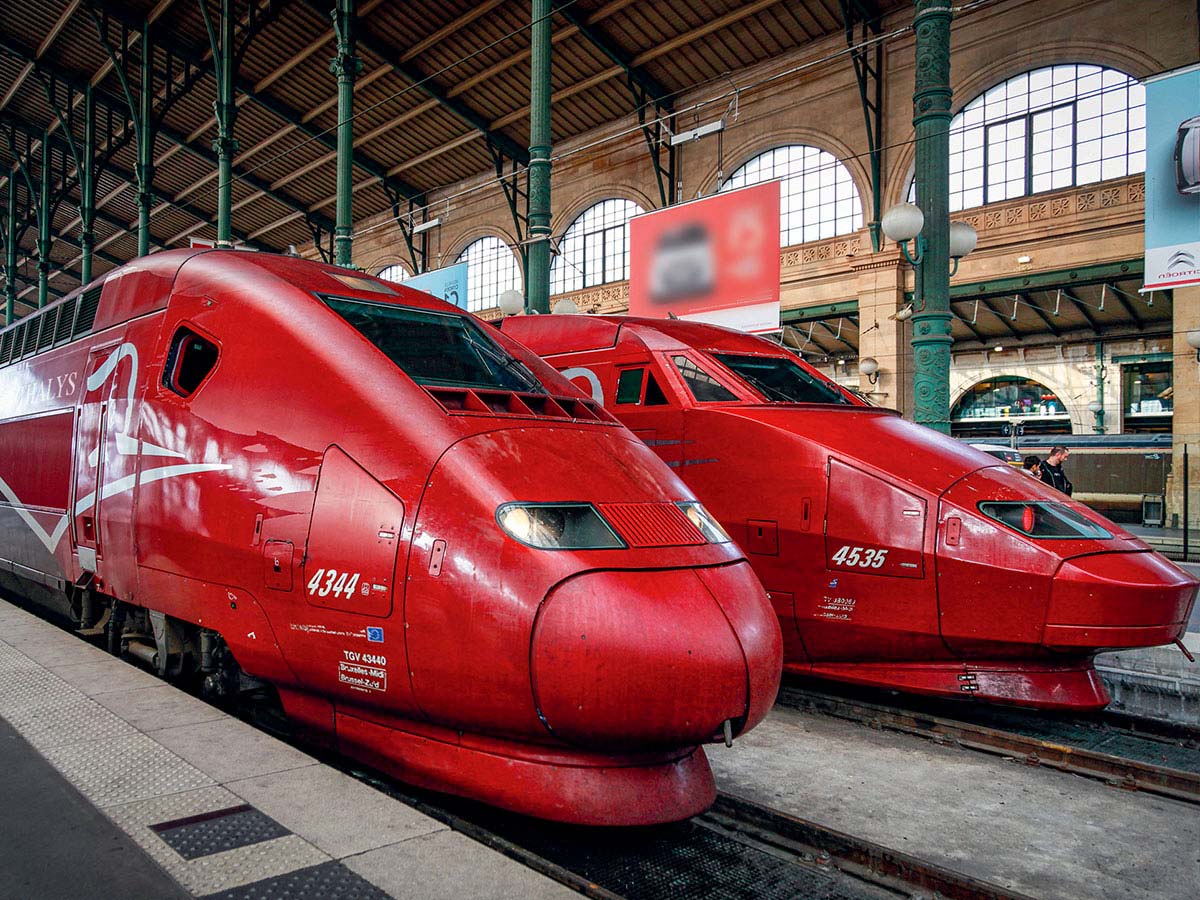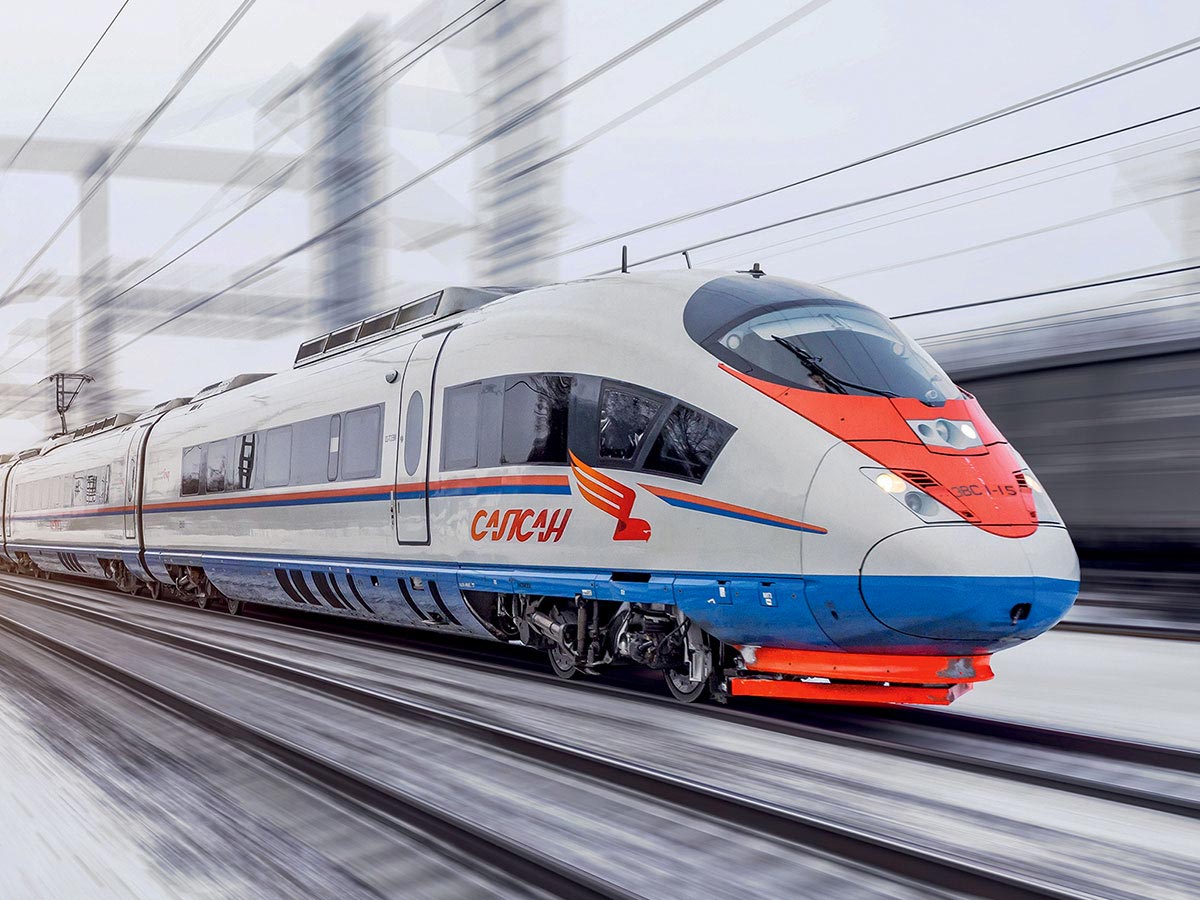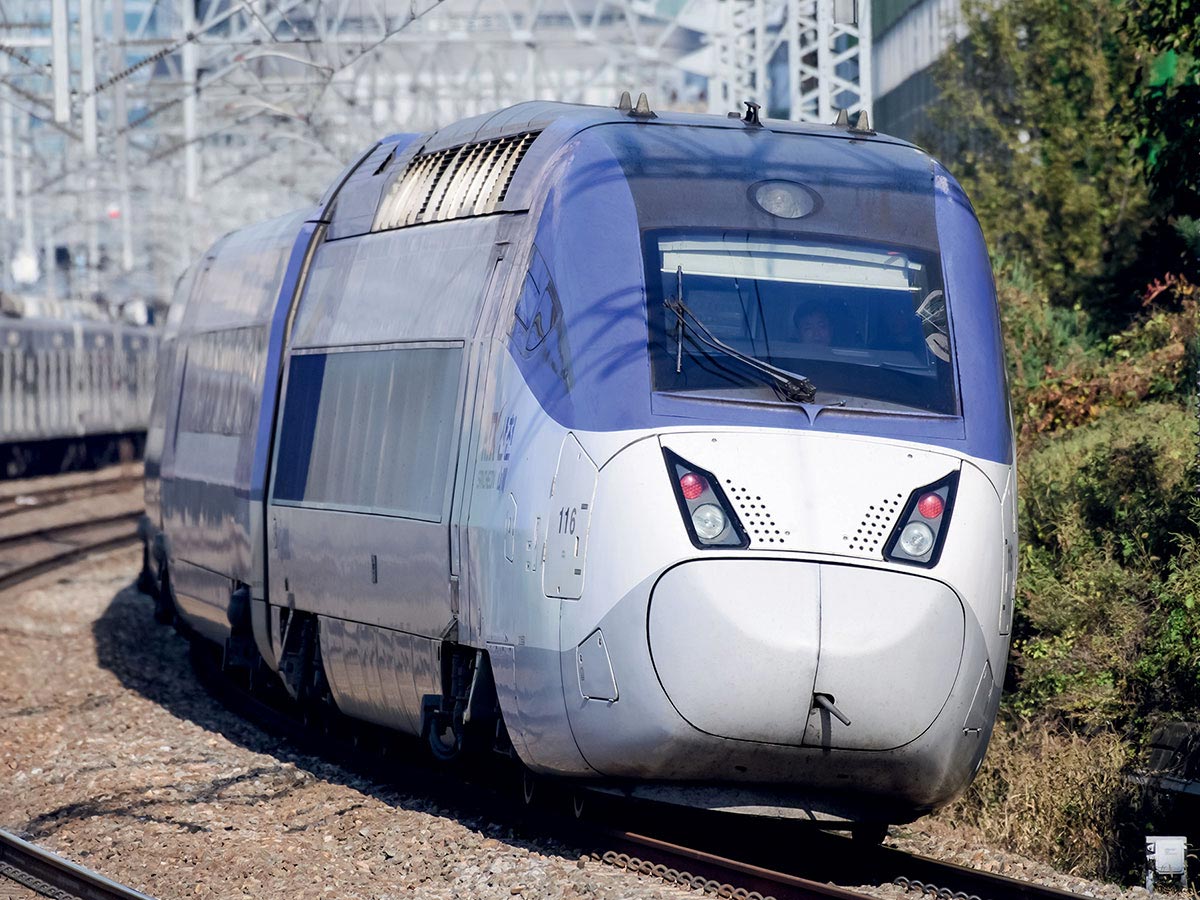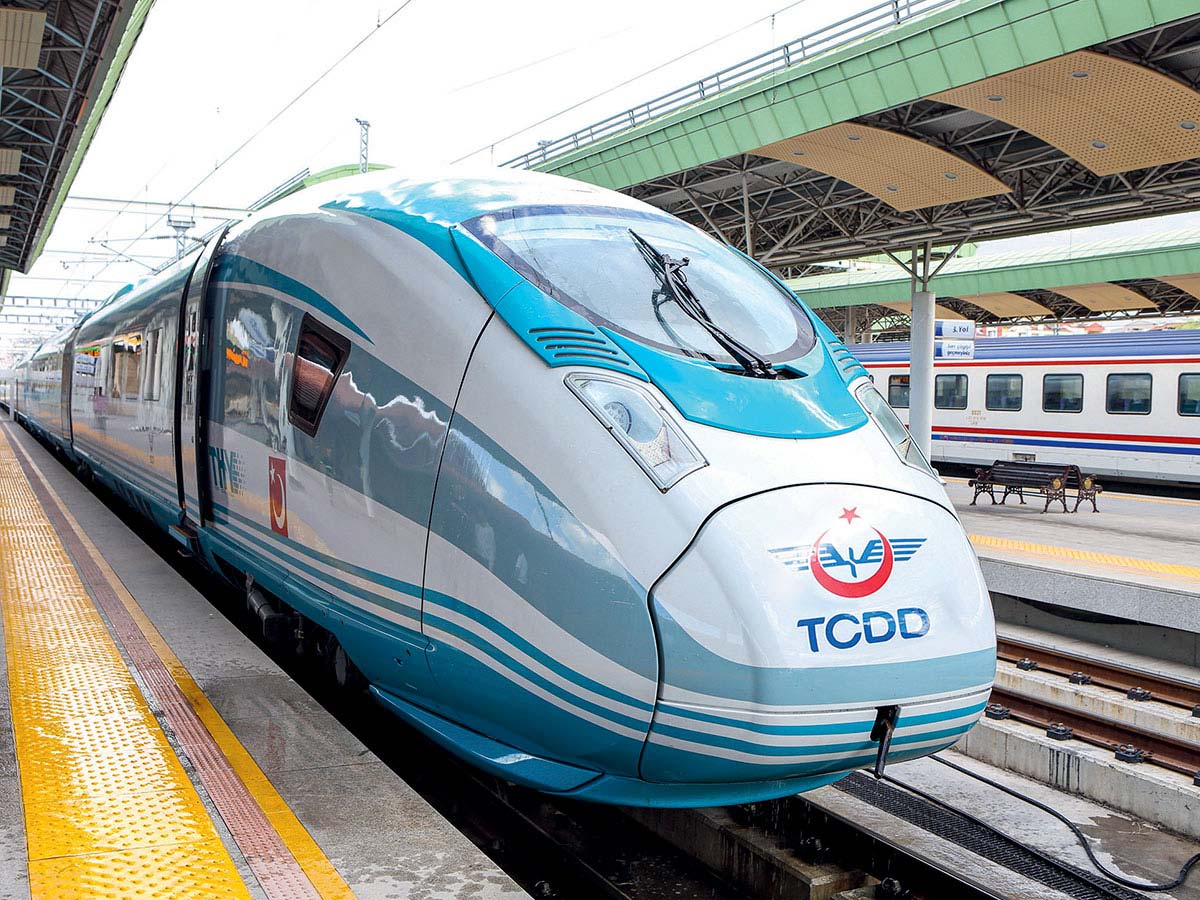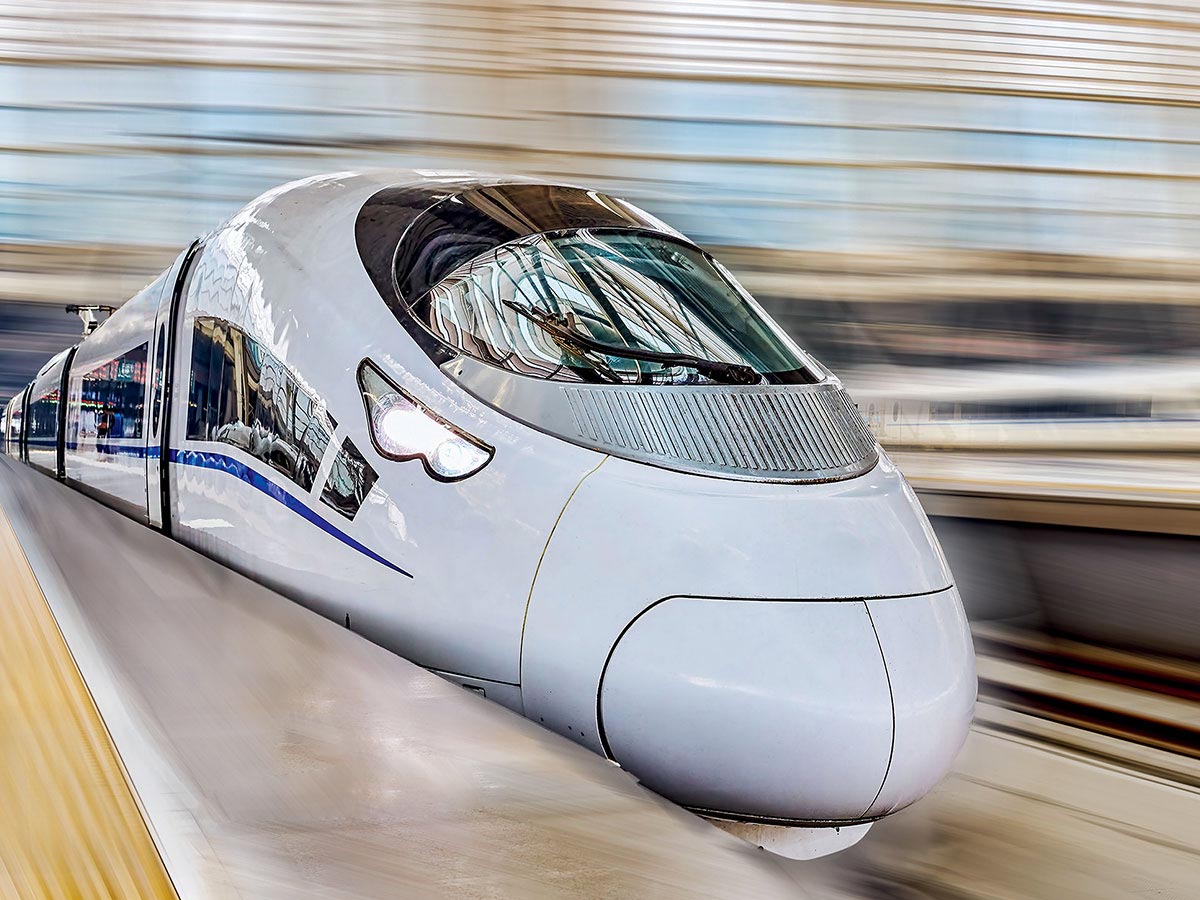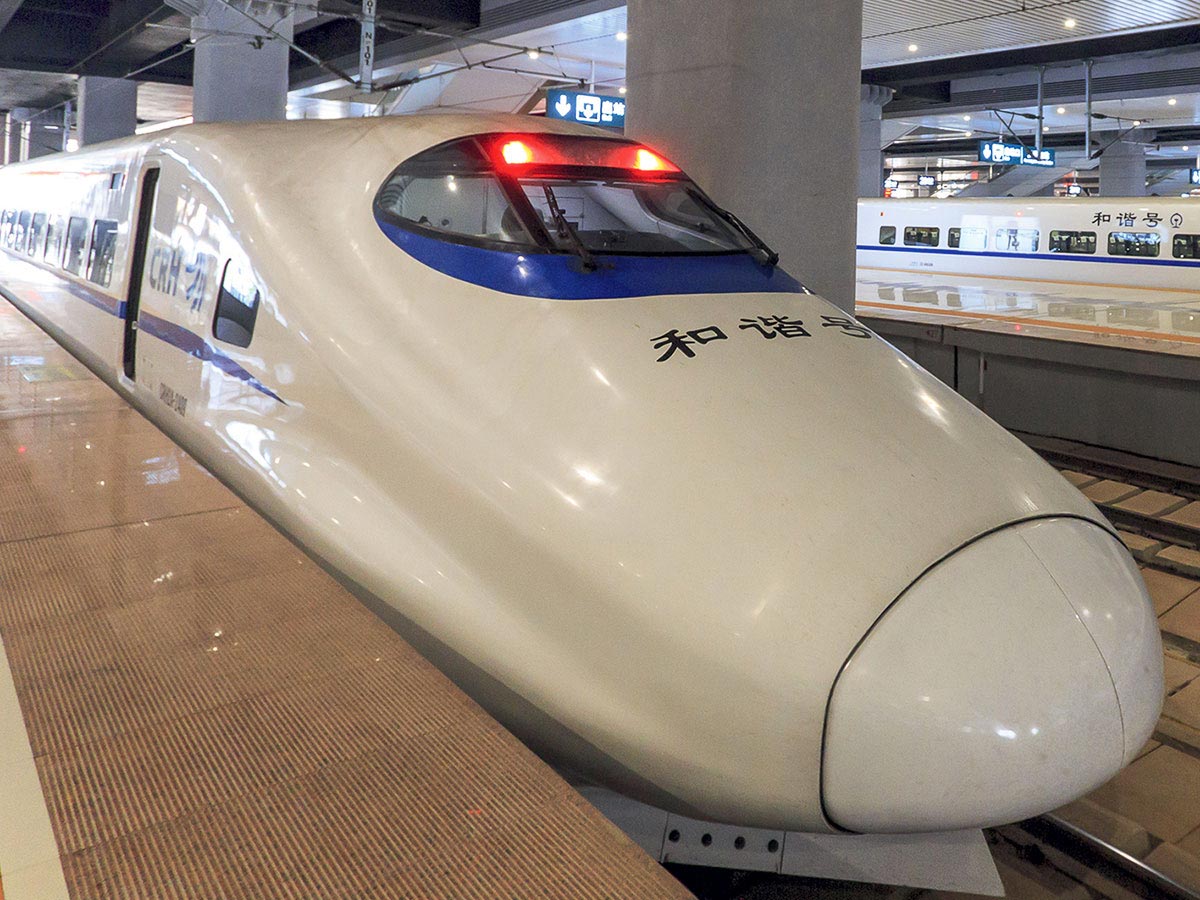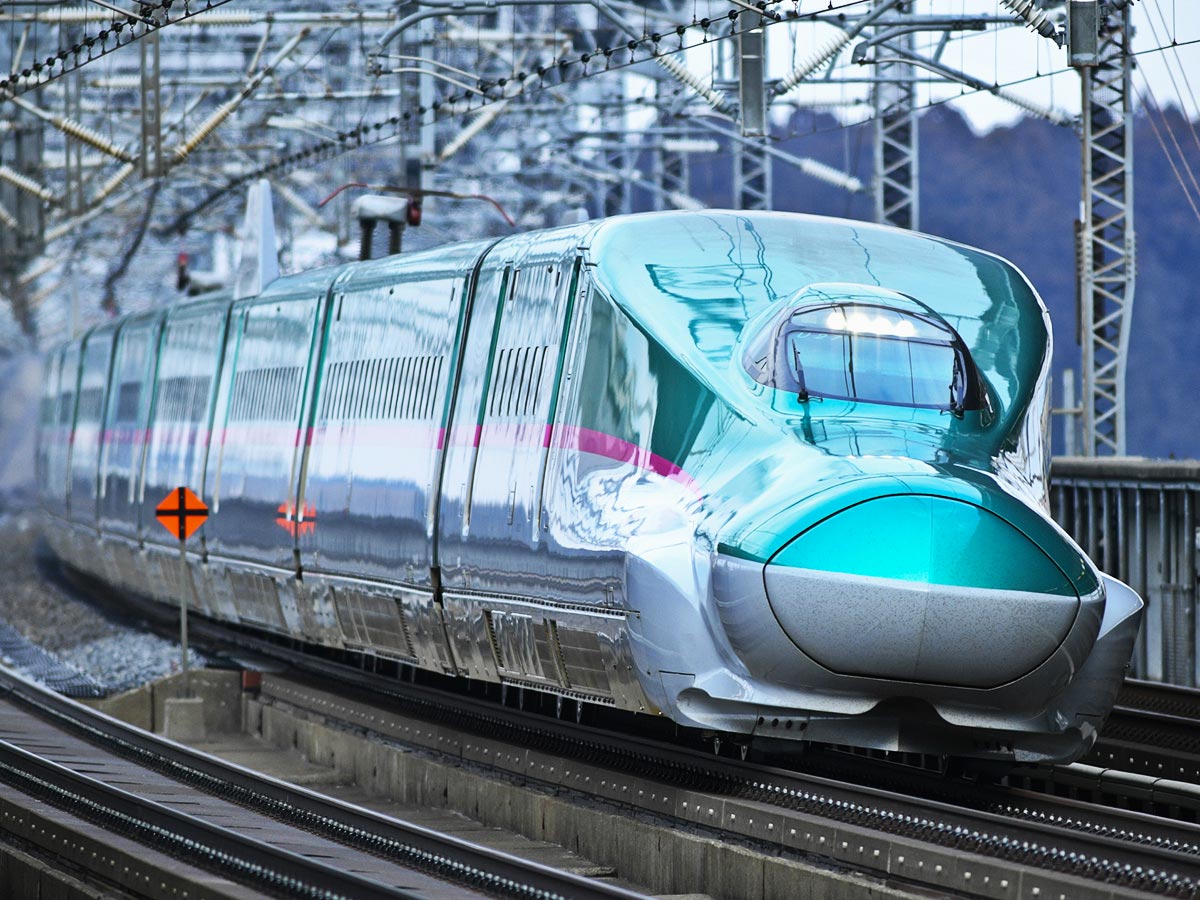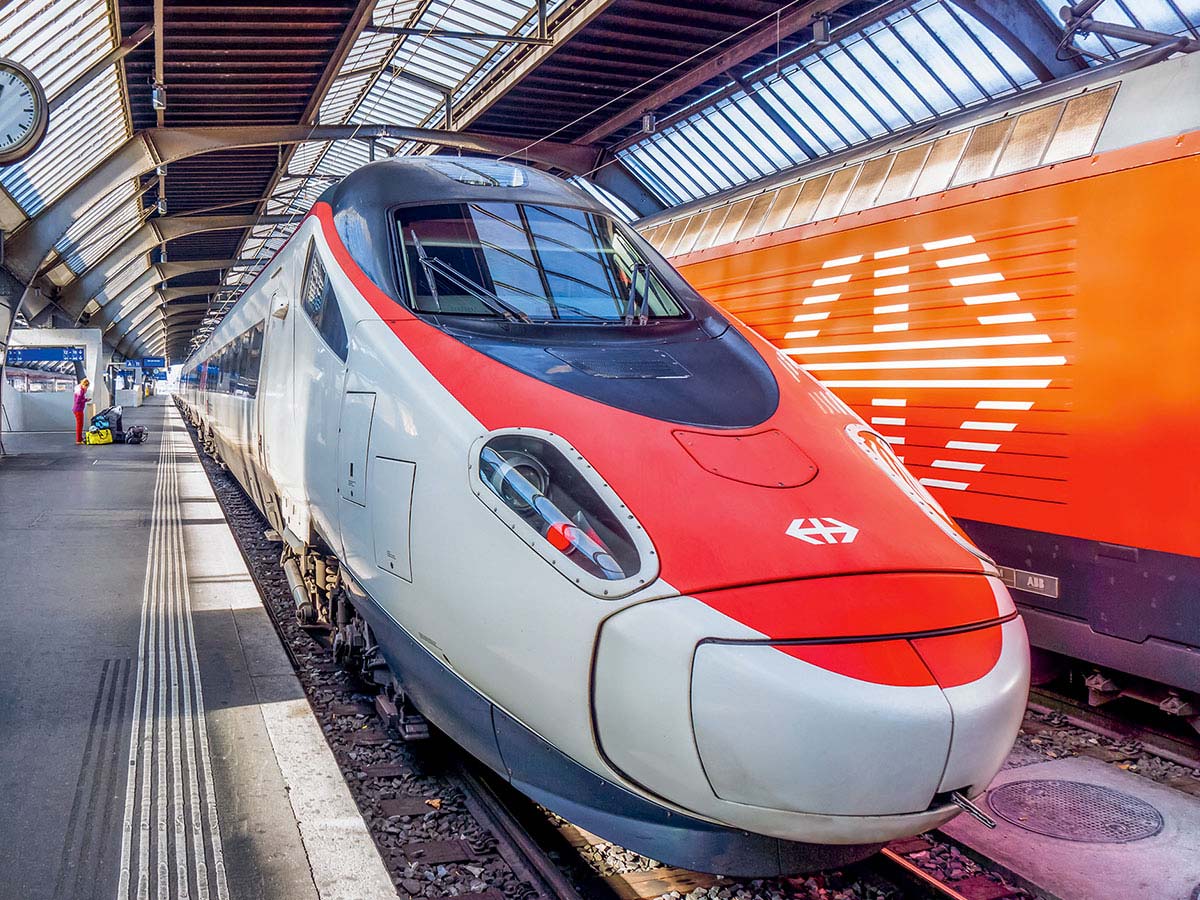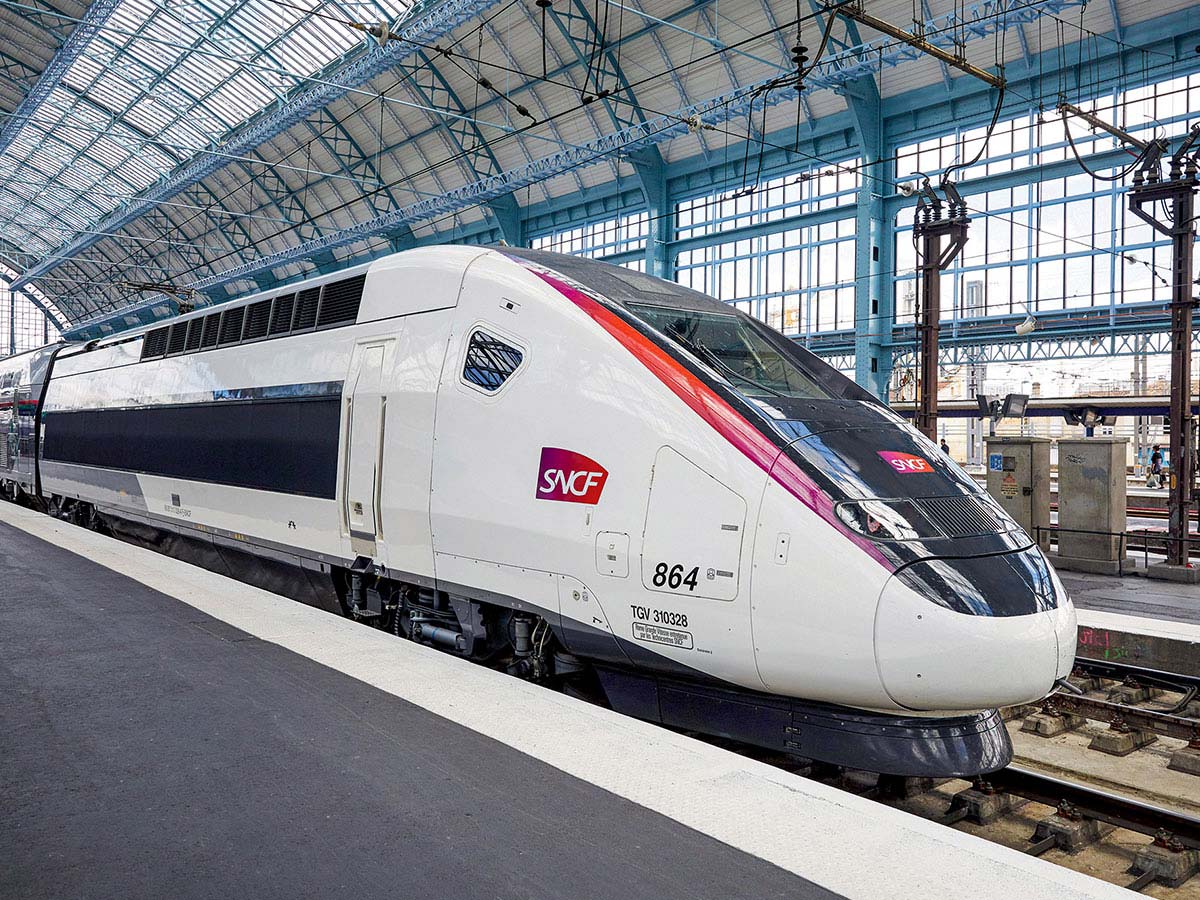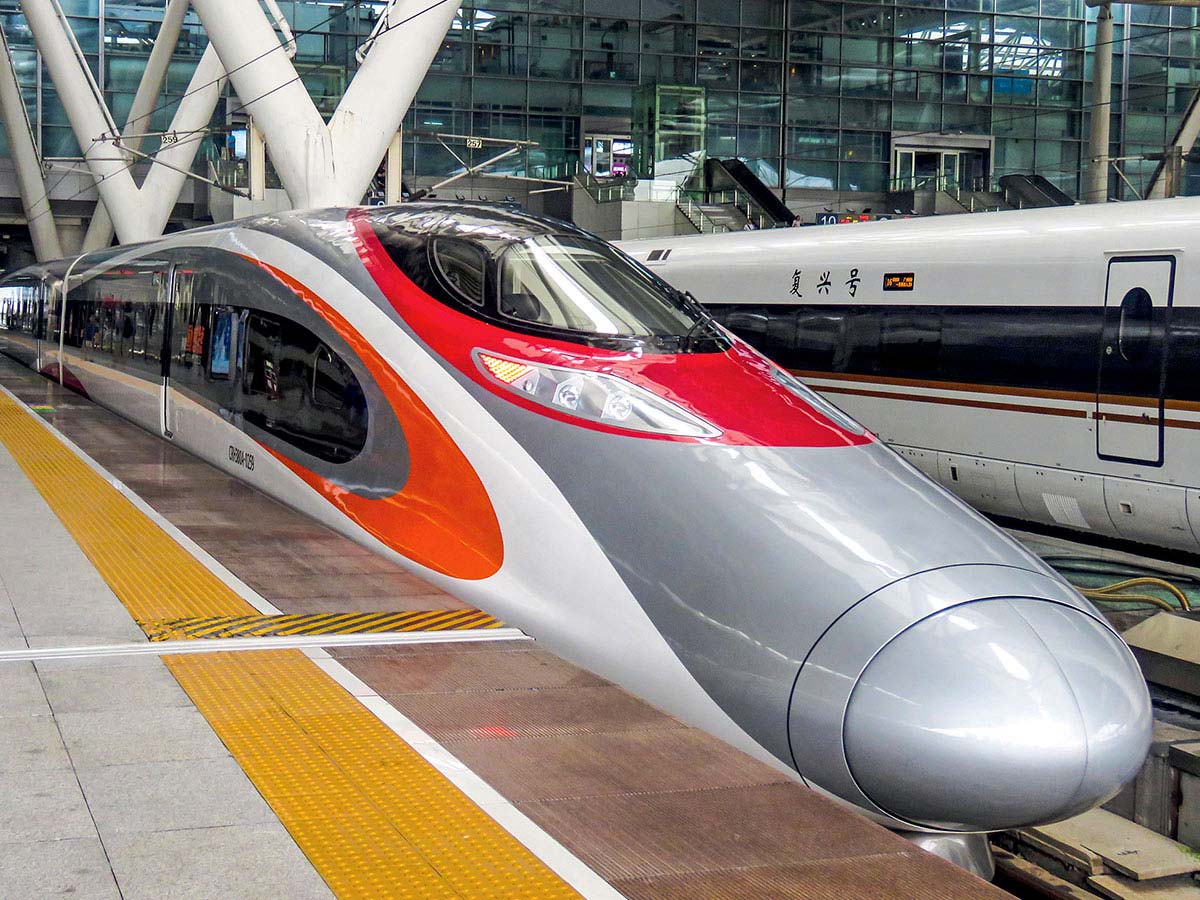BARCELONA > MADRID

2008 | SPAIN
Journey
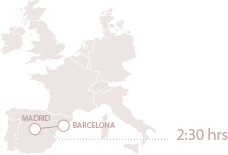
More Info
- Length in km: 652 km
- Name of the train: AVE
Over the past twenty-six years, the high-speed network has radiated in all directions from the central hub of Madrid: to Andalusia in the south, Valencia in the east, Castile-León in the north, Galicia to the north-west, Aragon, Catalonia and France to the north-east. The connection of the two most important cities of Spain, Catalonia’s dynamic Barcelona and the administrative and political centre of Madrid was established in 2008, sixteen years after the inauguration of the first line from Madrid to Seville. Crossing Catalonia from mountains to coast and Aragon with its Roman churches, Moorish castles and monasteries, the very touristic Madrid-Barcelona line also serves very important economic areas. The line was an immediate success, and has since become the most popular route in the country. In addition, Spain has pursued the expansion of the high-speed network, and with 2590 kilometres of high-speed lines already in service, has taken the lead among European rail networks in terms of track length.
Leaving Barcelona
The Catalan capital is on the rise. Each year, the metropolis receives 32 million visitors, or twenty times its population! This walkers’ paradise is best discovered on foot, from Las Ramblas to the port, the narrow streets of the Gothic Quarter (Barri Gòtic) to the Parc Güell. It is a lovely way to admire the local monuments of modernist style. The city of Miró, Picasso and Tàpies is also that of Gaudí, whose colourful curved buildings, including the extraordinary Sagrada Familia, appear throughout the city. Known for audacious design, Barcelona is also relentlessly nocturnal, offering a dizzying selection of entertainment, cultural events and festivals of all kinds. And if visitors choose to spend a day at the beach, they can get there by subway.
In the Sants quarter, northwest of the downtown area, the Barcelona-Sants station receives the AVE (Alta Velocidad Española) high-speed trains arriving from Madrid, Málaga or Seville as well as international high-speed trains connecting with France. The station is entirely underground, and in 2012 a major renovation doubled the passenger terminal surface area, adding shops, restaurants, and a tourist office as well as a comfortable hotel. The vast, light-filled reception hall resembles an airport rather than a train station, an impression reinforced by the control systems in place for platform access. In the near future, the Barcelona-Sagrera station - currently under construction - will receive high-speed trains. Located in the San Martí district, this underground station was once exclusive to freight train traffic, and has been designed to welcome 100 million travellers each year. The city’s two stations are connected by a tunnel dedicated to high-speed service.
A new phase
In the 1960s, the concept of linking Madrid and Barcelona via high-speed was already under discussion. And yet, the first line to be exploited was Madrid-Seville, a choice intended to put modernity on display at the Universal Exposition in Seville in 1992. The opening of this first 471 km -long line was highly successful, which inspired Spanish railways to begin construction on the Madrid-Barcelona line. The first section to Lleida was completed in 2003, and the second section to Tarragona in 2006.Two years later, passengers travelling between the stations of Barcelona-Sants and Madrid-Atocha could do so in two and a half hours via direct train, and Barcelona now benefits from a high-speed connection to the El Prat airport.
This 620-kilometre-long line marked a new phase in the history of the Spanish high-speed railway, designed to be operated at average speeds between 200 and 350 km/hr. Spanish rail further connects with French rail with the high-speed line from Figueras to Perpignan, crossing the Pyrenees via an 8 kilometre-long tunnel under the Perthus pass.
Barcelona-Madrid, the journey
The train departs from Barcelona, weaving its way through the narrow and serpentine Llobregat valley. Once past Martorell, in the distance appears the unmistakable Montserrat mountain range, whose walls of jagged rocks once inspired Antonio Gaudí. Behind its peaks lies a sanctuary for pilgrims travelling to pray to the Black Madonna of Montserrat, patron saint of the region. Vilafranca del Penedès, esteemed for the quality of its cellars, lies at the heart of vineyards that produce the cava sparkling wine. The sandy beaches of the Mediterranean coast seem to beckon the rail line, which arches toward Tarragona before heading northwest. A stop at Camp de Tarragona is essential to visit the ancient Roman city, where vestiges of Roman and medieval life blend harmoniously to reveal a two-thousand-year history. After the fortified village of Montblanc, the line travels through many tunnels under the surrounding sierras. Passing close to the Santa Maria de Poblet monastery, one of the great Cistercian edifices of Catalonia, the line continues across agricultural plains before arriving at Lleida, the cathedral-citadel city on the banks of the Segre River. Continuing through Aragon province, the train runs through the desolate stretches of Monegros before crossing the Ebro River to finally stop at the massive Zaragoza-Delicias station, a major hub on the Spanish railway network. Zaragoza, the capital city of Aragon, is worth a side trip for its stunning array of Gothic, Moorish, Renaissance and Mudéjar monuments. Now entering a mountainous region, the line is once more studded with tunnels. Here among the clay-rich hillsides lies Calatayud, where passengers can make a quick stop to admire the Piedra monastery a few kilometres to the south, then on to the medieval Santa Maria de Huerta, still inhabited by monks who practice their faith. The train carries on through the lakes and olive groves of Guadalajara province, passing near Sigüenza, a charming hill-terraced village dominated by a majestic cathedral. Last stop is Guadalajara, at the north-eastern gateway to Madrid, before entering the Spanish capital.
→ Alcázar of Segovia in winter.
A technical adventure
This line proved to be quite complicated to build, primarily in terms of civil engineering, as technical problems accrued throughout the construction process. On the Madrid-Lleida section, trains were limited to speeds under 250 km/hr until full implementation of the European Rail Traffic Management System (ERTMS), the European control system. Between Madrid and Zaragoza, 25% of the route was laid out in semi mountainous areas, reaching as high as 1,206 metres at Alcolea del Pinar. Near Zaragoza, fragile subsoils and the consequential high risk of collapse compelled engineers to reinforce track foundations. On the Lleida-Barcelona section, selection of the route itself was subject to controversy. The most direct path to Barcelona would shorten travel time, but would have bypassed Tarragona.
It was thus decided to extend the line near to that city. Geological complications were many, and frequent landslides and collapses halted work progress time and time again. Certain tunnels even required revision after construction, without any traffic disturbance. A 5.7-kilometre-long tunnel connects the Sants and Sagrera stations. The fact that the tunnel passed near Gaudí’s Sagrada Familia, the crown jewel of Barcelona, drew the opposition of many leaders and became the subject of various archaeological digs. The excavations revealed unknown treasures: fifteen historic sites dating back to the Neolithic, Iberian, Roman periods, including the wall of a Roman villa with mosaics fully intact.
→ A Renfe Velaro S-103, built by the Siemens Company.
Elegant Velaro
As the extension of the high-speed network has continued to progress, Spanish railways have modernised their fleet, purchasing trains from a variety of suppliers, particularly from Alstom, Siemens, Talgo and CAF. In October 2003, Madrid-Lleida was inaugurated with a 100 series Alstom train. The material was diversified over the years, with the Talgo S102, followed by Siemens Velaro, which entered into commercial service in 2007. The latter has high capacity in terms of passenger transportation and can operate at speeds up to 350 km/hr. Dressed in white, the cars are marked by a wide red ribbon accented with elegant grey. Their particularity? Velaro engines are spread throughout the train, in contrast to other high-speed trains, whose engines are grouped into two motors located at each end of the train. The eight Velaro coaches thus accommodate all seats, with simple conductor cabins at their ends. On the heavily-trafficked Madrid-Barcelona line, this seating capacity increase is certainly justified. Climate conditions in Spain can range from 43°C in summer to below 0°C in winter in mountain regions, requiring significant modifications in the electrical and air conditioning systems. Renfe proposes three classes of rail service: Preferente, Turista plus and Turista, with seats that can be adjusted to face the direction of travel. Velaro travels the distance non-stop between these two cities with a train leaving every hour. Passengers benefit from dedicated spaces at the station, as the high-speed network is separate from the conventional network. The atmosphere resembles an airport boarding lounge, with baggage check and ticket validation before access to the platform. Travellers must arrive before the closing of the access doors to the platforms. Check-in is obligatory before boarding, and closes two minutes before each departure.
Arriving at Madrid
Stepping outside the Atocha Station, visitors are immersed directly into the heart of the Spanish capital. Beginning with the Paseo del Prado, which is home to the three most prestigious museums of the city: Thyssen-Bornemisza, Reina Sofia and the Prado. The latter alone justifies a visit to Madrid for the wealth of its collection of Spanish painters such as Zurbarán, Velázquez, Murillo, and Goya, as well as extraordinary Flemish and Italian works. One can stroll through the Buen Retiro Park, with its waterfront cafés, 19th century pavilions and rose garden, or visit the National Archaeological Museum, whose gardens feature a replica of the famous prehistoric Altamira Cave. Further north is the elegant Salamanca district, an attractive shopping quarter.
Atocha Station is now connected by a 7-kilometre-long tunnel to Chamartín, which will allow for high-speed trains to cross Madrid entirely underground and without need of gauge change. Leaving the Chamartín station, visitors will enjoy a very different view of the capital: the highest towers of Spain by architects Norman Foster or César Pelli, built between 2005 and 2009. A bit further south are the very contemporary leaning towers that mark the Plaza de Castilla.
→ Cuatro Torres Business Area in Madrid.
Barcelona-Madrid in two and a half hours
The success of the high-speed line between Barcelona and Madrid echoes like a vindication of the railway over automobile and air travel, a success that combines the increasing awareness of traffic saturation in these two European cities with a significant environmental gesture. With the advent of the AVE, airlines have suffered loss of revenue, despite efforts to streamline boarding procedures and the price wars specific to this route. Though air travel is indeed a faster mode of travel, trains boast the advantage of delivering passengers directly to downtown areas. In connecting the two rivals, the Spanish and Catalonian capitals, this high-speed line has made a significant impact in economic terms. Sixty percent of passengers are business travellers who make the round trip in the same working day.
These professionals prefer rail to air travel, as the former offers internet access and cell phone signals, enabling them to communicate with clients without interruption. Today Madrid occupies a strategic position. With high-speed networks sending trains in all directions from the capital city, all major cities can be reached in less than three hours from Madrid. In addition, the two major tourist destinations of Madrid and Barcelona are now connected to France via international high-speed trains, thus bringing European capitals closer together.
a selection of HIGH-SPEED LINES by creation date
1964

TOKYO > OSAKA
1992

TURIN > NAPLES
1992

MADRID > SEVILLE
2002

COLOGNE > FRANKFURT
2008

BARCELONA > MADRID
2010

SEOUL > BUSAN
2011

BEIJING > SHANGHAI
2014

ANKARA > ISTANBUL
2014

LANZHOU > URUMQI
2016

SHANGHAI > KUNMING
2016

TOKYO > HAKODATE
2016


ZURICH > MILAN
2018

BEIJING > HONG KONG
2018

TANGIER > CASABLANCA
